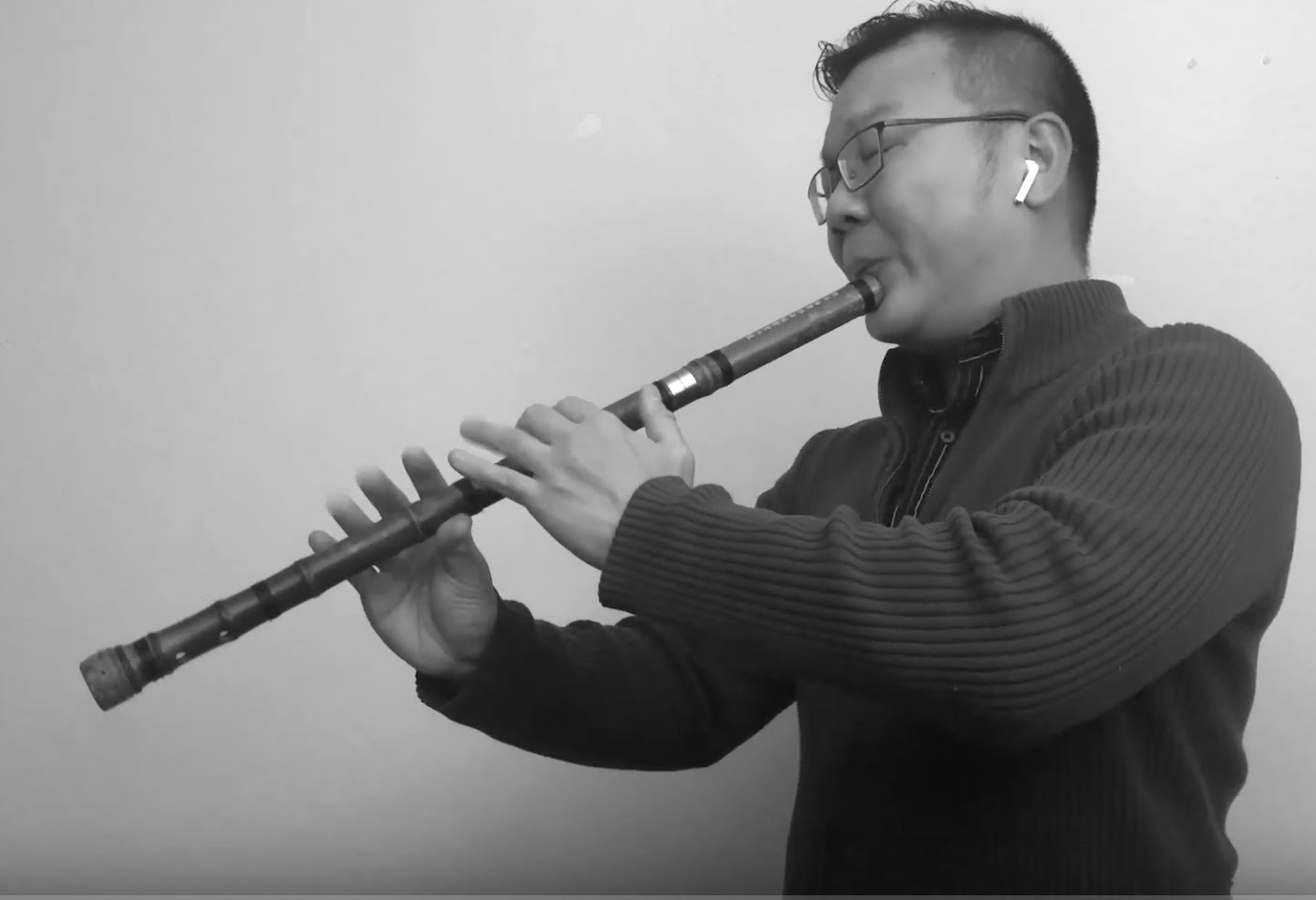by Mike Telin

Of his July 2018 performance with No Exit clarinetist Gunnar Owen Hirthe, I wrote that “the evening was a walk through a cultural garden of sonic delights.” On Friday, July 2, Hong-Da Chin returned to the No Exit stage, this time via a pre-recorded, streamed concert. The hour-long, solo performance features five mesmerizing improvisations played on four traditional Chinese flutes.
And once again, the cultural garden is in full bloom as Chin proves himself to be a master of improvisation — each with a discernible arc that grows out of the instruments’ timbres and technical capabilities. The video is available on demand on No Exit’s website.
Darker for xiao and electronics — xiao is a bamboo instrument that is played vertically like a recorder and has a mouthpiece shaped like the letter U — begins with a grand, percussive opening that quickly transitions into repetitive, articulated high pitches. Throughout, the flute line lives on top of the thick, demonic electronics, resulting in an invasion of other-worldly microtonal sounds — a beautiful horror-film soundtrack.
Next, Chin turns to the xun — which he describes as the Chinese ocarina — an egg-shaped clay instrument that can only play a single pentatonic scale. Voice Poem for xun solo is full of extended techniques often heard on modern flute — tongue clicks, pitch bends, wind gusts, flutter tongues, and slaps on the finger holes. All of which make the sudden, short spurts of melodic material all the more attractive.
The dizi is a six-hole, transverse bamboo flute with a vibrating membrane that creates a buzz. The instrument is the perfect choice for The Buzz of a Fly for dizi solo. As the title suggests, the fly buzzes around making wide, dramatic circles as it spins and dives, zooming here and there until it finally finds the open window.
Although the bawu looks like the dizi and xiao, the instrument’s sound is produced by blowing into a metal reed, resulting in a tone quality similar to that of the clarinet.
Clarinet for bawu solo begins with long, straight-tones motifs that are punctuated by intermittent lower, metallic sounds. Suddenly, fast scale flourishes and trills take over before returning to the opening material. The piece is engaging in its simplicity, and Chin’s subtle timbre changes keep things fresh.
Chin saves the most expansive improvisation for last — Crying for bass xun and electronics is a haunting imagination of a Taoist funeral. Here, the low growls in the electronics, coupled with the deep, rich sound of the xun, become hypnotic. The steady pulse of the temple block and accents from the gong depict the solemnity of the funeral procession. Gradually, the sounds of humans crying become audible. Suddenly the music stops, leaving the crying to continue as the screen fades into darkness. Fascinating!
Published on ClevelandClassical.com July 7, 2021.
Click here for a printable copy of this article





